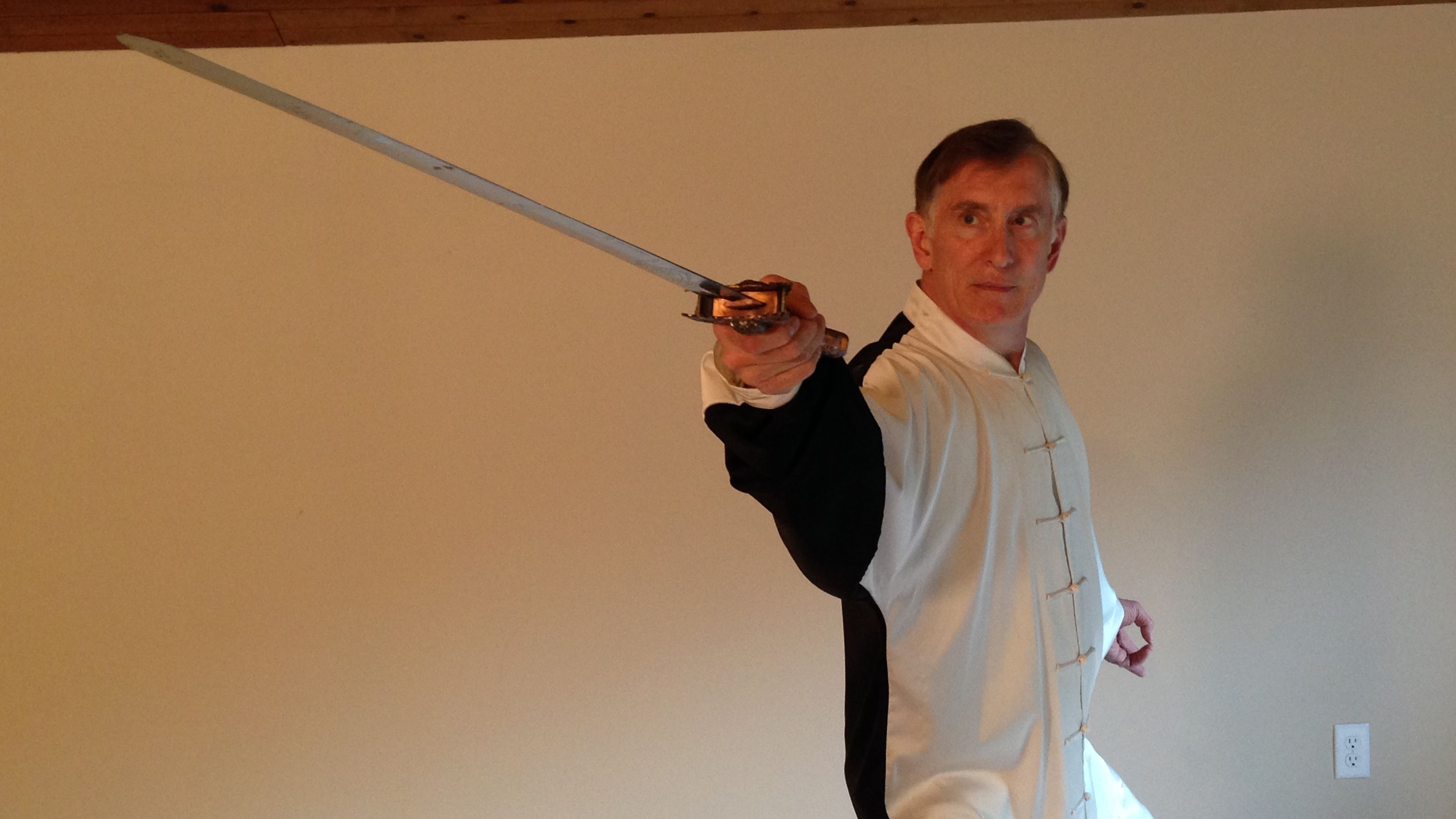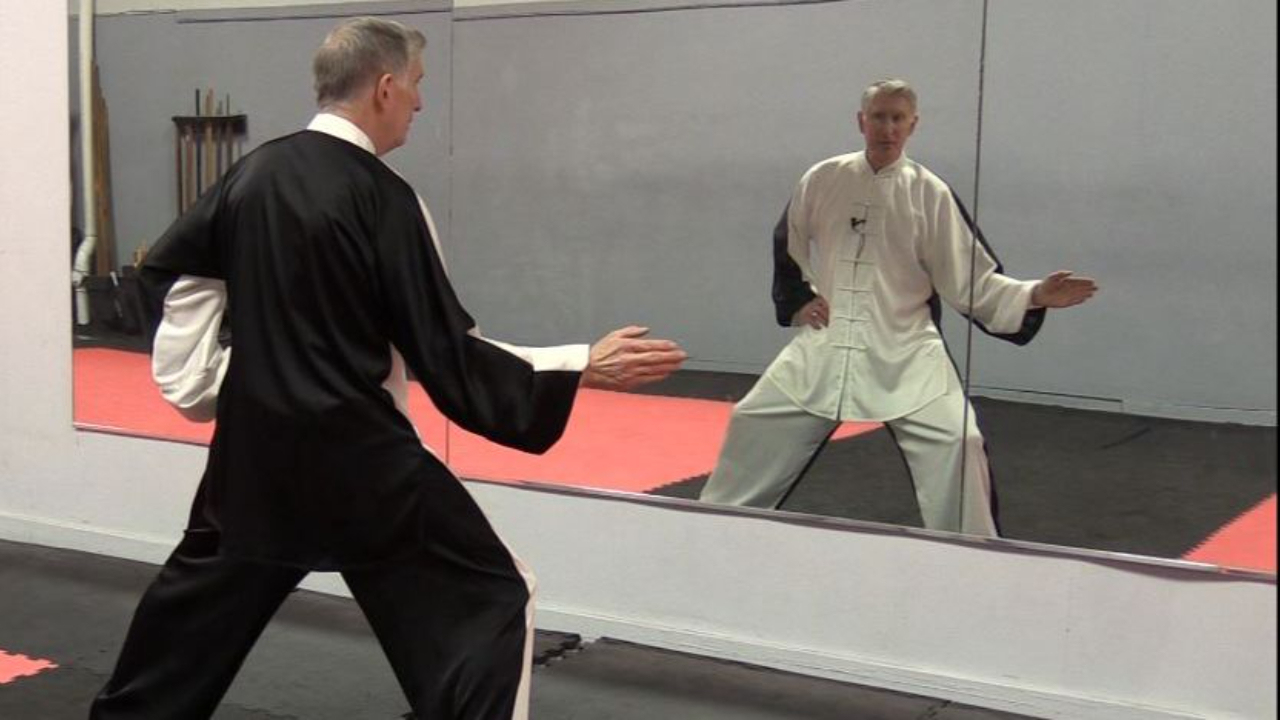Five Ways of Centering Yourself During Anxious or Negative Times

If you have listened to my podcast, you'll hear me encourage listeners to "remain centered at all times."
In Taoist philosophy, one of the fundamental principles is to find balance and harmony within yourself and with the world around you. To center yourself in the face of anxiety about the future, here are some recommendations:
-
Focus on the present moment: Instead of worrying about what the future might bring, focus on what you can do in the present moment to take care of yourself and your needs. This might mean practicing mindfulness or meditation such as qigong to help quiet your mind and bring your attention to the present. If you are washing your car, sweeping the floor or reading a book, focus on that one thing and if stray thoughts cross your mind, let them go and refocus to that one thing.
-
Let go of attachments: In Taoism, as in Buddhism, it is believed that attachment to things outside of ourselves can lead to suffering. Instead, try to let go of attachments to outc...
Tai Chi Master Zhang Xue Xin Dies at 94 -- An Interview with Zhang Disciple J. Justin Meehan

Taiji master Zhang Xue Xin passed away in China surrounded by family on February 25, 2023. He was 94 years old.
He began studying Chen style Taiji in 1963. One of his teachers was Chen Zhaokui. Later, he studied with Grandmaster Feng Zhiqiang and became an indoor disciple.
Master Zhang moved to the United States and began living and teaching in San Francisco. His classes were held at Golden Gate Park. He emphasized silk-reeling spiraling movements and applications, particularly chin-na (joint locks). He retired in 2013.
My first Chen style teachers, Jim and Angela Criscimagna, studied with Master Zhang for around eight years. I never studied with him, but I visited San Francisco on business a couple of times in the early 2000s and stopped by to visit his class. The photo at the top of the post was taken the first time I met him.
We have lost a great one with Master Zhang. I heard of his passing from his indoor disciple, J. Justin Meehan, who lives and teaches in the St. Louis area...
"SkepDoc" Dr. Harriet Hall Dies at Age 77

Dr. Harriet Hall, known as the "SkepDoc" and a former guest on my Internal Fighting Arts podcast, died unexpectedly on January 11, 2023 at the age of 77. She had been in poor health including heart issues for the past three or more years. I was very sorry to hear the news. She was an intelligent person with integrity.
Dr. Hall was a critic of "alternative" medicine that so many people involved in Taijiquan seem to believe in. She did a lot of good work bringing critical thinking skills to the discussion of science and medicine. As Dr. Steven Novella wrote about her:
"....Harriet has been tireless in her efforts to help educate the public about how science should inform the practice of medicine, and how medicine, and even common sense, can go horribly wrong when we abandon good science as our guide. Among her many contributions, Harriet is remembered for coining the phrase, Tooth Fairy Science, which nicely crystalized and communicated one of the many core problems with alternative sc...
What Happens When a Martial Artist Turns 70?

I hit the big 7-0 last week.
They say age is just a number, but in my case, it's a BIG number.
I didn't even know how to spell septuagenarian and now I is one.
It's bad enough I've been dealing with the loss of one lung and a heart problem for the past 13 years, but now I have to be an old man, too? That's like adding insult to injury!
It's enough to make you throw sidekicks.
Okay, Ken. Stop and take a breath.
Center yourself.
Calm your mind and relax your rapidly withering, creaking body.
Worse things can happen to you than turning 70. For example, you could have died before you turned 70.
I had one grandfather who died at age 27, another who died at 69, and my dad died at age 61. I should be happy that I'm still studying, practicing, and teaching the internal arts. And I actually am very happy about that.
But it plays with your head. On the day after my birthday last week, I realized that I felt no different than I did the week before. I felt young. You know, like I was ...
Looking at the Chen Straight Sword Form Through Fighting Applications

I had an idea. Instead of demonstrating a form just showing the movements, how about doing the form from start to finish using fighting applications?
I have never seen this done, and since I love exploring the self-defense meaning and mechanics behind each movement I do, I figured I'm just the man for the job. The sword has been part of my practice since 1987, and I feel strongly that if you are going to learn a weapons form, your art is empty if you don't know how to use it.
So here is the Chen Tai Chi Straight Sword (Jian) form, shown through applications. If you know the form, you'll recognize the moves. If you don't know the form, you can learn it through my DVDs on the Chen Straight Sword Form, or you can become a member of my website and study it with me. In the meantime, I hope this video helps you understand the form better. My student Colin Frye is helping me, and since we are using metal swords, we are being careful. This is not a "cutting" video, but it should give you ple...
Top 10 Tai Chi Movements to Practice During the Holiday Season

The holiday season can be a stressful time. Beween buying gifts, going to work parties, and reuniting with family, it can knock you out of harmony with the universe.
In fact, compared with the summer months, statistics show that Tai Chi practitioners at this time of year are 37% more likely to rip out an irritating family member's heart and show it to them before they die.
That's why I recommend stopping for a few moments to breathe, calm your mind and center yourself by doing a short Tai Chi form designed to relieve your holiday stress and prevent your hand from striking out with five fingers of death.
Whether you're dealing with Christmas, Hanukkah, Kwanzaa or Festivus, this form will help you remain One with the Universe during the hectic days between now and the first of the new year.
Here are the Top 10 Tai Chi Movements for the Holidays:
- Buddha's Warrior Attendant Pounds Egg Nog
- Grasp the Elf’s Tail
- Part the Wild Reindeer’s Mane
- Hidden Spiked Punch
- Fair Maiden Works in...
A Warrior in the Garden -- Why Peaceful People Learn Martial Arts

My dog Lucky smiles when Nancy or I get home from work or other errands. He is a strong, 55-pound Labrador/Pit Bull mix who could tear one of us apart if he wanted, but instead, he smiles at us when he greets us.
I didn't know why he does this, so I looked it up because someone who doesn't know Lucky might think he is baring his teeth, ready to eat them alive.
When dogs do this, it is called a "Submissive Smile." It is their way of communicating, "I am not aggressive."

I found out about this "Submissive Smile" and realized I do the same thing. When I encounter a stranger, I smile, nod or say hello, even when I just pass someone in the cereal aisle at the grocery store, among the boxes of Cocoa Puffs and Honey Smacks.
I am always quick with a joke or a light comment to put people at ease. I like for people around me to relax and have fun.
Perhaps I'm communicating, "I am not aggressive" in my own friendly way.
I once told someone, "I am a man of peace." The person replied, "Then...
A Beginner's Lesson in Tai Chi Silk-Reeling - Video

If you have a half-hour to invest, try to work through this video -- it's a live class I did last weekend on Zoom teaching the first of Chen Taiji's Silk-Reeling exercises -- "Single-Hand Reeling."
This is helpful to all internal martial artists, but particularly if you practice Taijiquan and Baguazhang.
I have to say that most of the videos I've seen on silk-reeling don't teach it at all. But that should be no surprise. The first teacher who taught me silk-reeling had no clue what silk-reeling is, so I was sent down a blind alley thinking that to achieve silk-reeling, we "imagine" our Qi spiraling through our body. It's part of "Qi cultivation," he said.
Nope.
Silk-Reeling "energy" -- the Chinese term is chan ssu jin -- is a physical skill requiring a spiraling through the body in a connected way.
Some say the spiraling movements add power to your Taiji. I believe the most practical purpose of silk-reeling is the neutralizing and redirecting of your opponent's force. You know the...
Watch a Silk-Reeling Class for Beginners Recorded Live with Ken Gullette
This class was recorded on Saturday, October 15, 2022. I invited the members of this website plus people who are on my email list who receive my Internal Tip-of-the-Week emails.
In this video, I go over the first silk-reeling exercise that I teach students. I learned this exercise from Chen Xiaowang and my first Chen taiji teacher, Jim Criscimagna. The instruction also reflects insights I've picked up from others along the way, including Chen Xiaoxing, Mark Wasson, Chen Huixian and Nabil Ranne.
This is a good example of my live Zoom classes, which I hold for members of this website. I do two live Taiji classes on Wednesdays, and I do live Zoom classes on Xingyi and Bagua at varying times. Members of the website get all the content on the site (close to 1,000 videos and pdf downloads) plus live classes and live one-on-one sessions, at no extra cost.
This video runs 32 minutes but it contains information you won't find on most silk-reeling videos.
After 49 Years of Martial Arts Why Am I Practicing So Much?

A little over a week ago, I marked the 49th anniversary of my first martial arts class. You might know the story by now -- 1973, a garage that had been turned into a dojo in the rear part of a strip mall in Lexington, Kentucky -- a room full of young people inspired by Bruce Lee -- in fact, there were so many new students in the intro class, the garage door was opened and the class spilled out into the shopping center's parking lot.
The following week, a large chunk of people didn't return. The week after that, we all fit inside the dojo with the door closed. Every month that passed, the class got smaller but still had nearly 20 students.
I practiced an hour a day, punching and kicking up and down the 7th floor hallway in Commonwealth Hall at Eastern Kentucky University. I was determined to become good.
Now, after 49 years, I find that I am still just as determined to improve my skills as I was in 1973.
Shouldn't I feel like a "master" by now? Instead, I feel more like a beginner....
